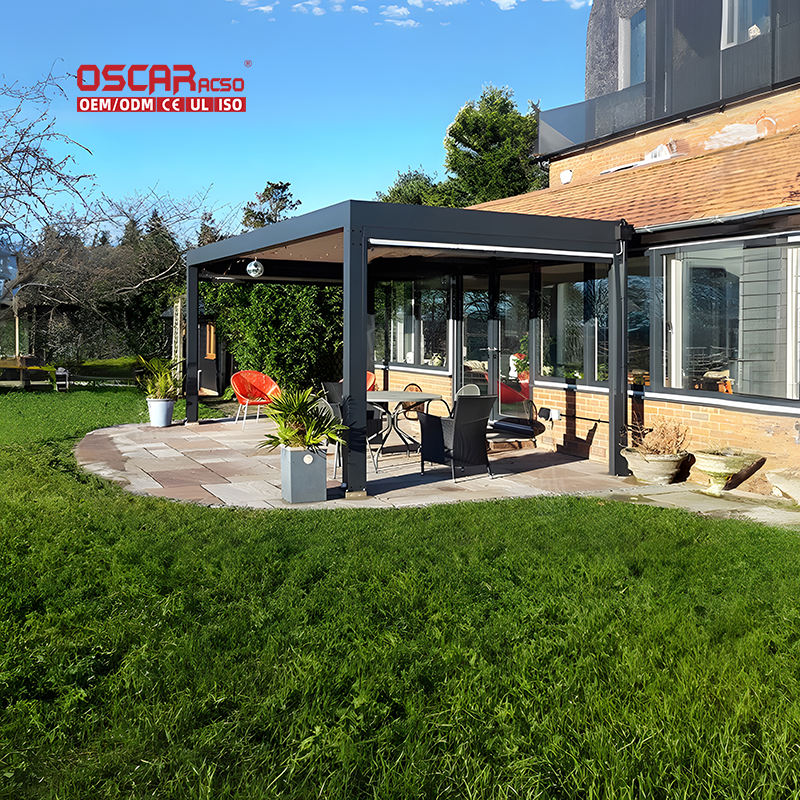Attachable Pergola Systems, Transforming Your Gazebo into a Multi-Functional Outdoor Room
Imagine seamlessly expanding your gazebo into a stylish, shaded oasis perfect for dining, relaxing, or entertaining—all ...
Why Connect a Pergola to Your Gazebo? 🤔
- •
Expanded Coverage: By adding a pergola, you create a transitional zone between your enclosed gazebo and open yard. This allows for flexible use—host larger gatherings under the pergola’s partial shade while keeping a weather-protected area in the gazebo itself. - •
Design Harmony: Matching materials (like powder-coated aluminum or galvanized steel) ensure a seamless flow between structures. For example, a lean-to pergola attached to a gazebo can mirror your home’s architecture, creating a unified aesthetic. - •
Cost-Efficiency: Instead of building a massive new structure, connecting a pergola leverages your existing gazebo’s foundation. This can save up to 30% compared to constructing a standalone addition.
Key Design Considerations for a Flawless Fit 🛠️
- •
Material Compatibility: Choose frames that match your gazebo’s existing structure. Aluminum is lightweight, rust-proof, and ideal for sloped roofs, while galvanized steel offers superior strength for heavy snow loads. For a natural look, wood-like aluminum finishes provide warmth without maintenance hassles. - •
Roof Options: - •
Polycarbonate Panels: Block 95% of UV rays while allowing diffused light. Perfect for creating a bright yet protected space. - •
Adjustable Louvers: These let you control sunlight and ventilation with a crank or remote. Ideal for adapting to weather changes. - •
Open Lattice: Classic and ideal for climbing plants like jasmine or ivy, adding a touch of greenery.
- •
- •
Anchoring and Stability: Proper attachment is non-negotiable. Use wall-mounted brackets or concrete footings to secure the pergola to your gazebo. For DIYers, auger anchors or weighted planters (filled with sand or concrete) offer drill-free solutions.
Installation Tips for a Stress-Free Build 📏
- 1.
Measure Twice, Build Once: Standard sizes like 8’x12’ or 10’x14’ fit most gazebos, but custom cuts may be needed. Ensure the pergola’s height aligns with your gazebo’s eaves to avoid awkward gaps. - 2.
Reinforce Joints: Use cross-tubes and triangular bracing at connection points. This prevents sway in high winds (up to 70 mph resistance when done right!). - 3.
Consider Professional Help: For complex designs or heavy materials, hiring experts can prevent costly mistakes. Many companies offer remote guidance or video tutorials.
Creative Uses Beyond Basic Shade 🌟
- •
Outdoor Kitchen Extension: Use the pergola section for dining al fresco, while the gazebo houses a grill or pizza oven. Add integrated LED lighting for evening ambiance. - •
Wellness Retreat: Hang yoga hammocks or meditation chairs under the pergola, with the gazebo serving as a storage spot for mats and gear. - •
Greenhouse Hybrid: Replace standard roofs with clear polycarbonate panels to create a sunlit area for potted herbs or succulents.
Personal Insight: The Future of Outdoor Living 💡
Overcoming Common Challenges 🚧
- •
Wind Resistance: In windy areas, opt for angled legs or weighted bases. Sandbags or concrete-filled planters (200+ lbs each) anchor without drilling. - •
Drainage Issues: Ensure the pergola’s roof slopes slightly (5-10 degrees) toward your yard to prevent water pooling. Gutters can be discreetly added. - •
Maintenance: Aluminum frames need only occasional rinsing, but wooden elements may require staining. Choose powder-coated finishes for longevity.
Environmental Perks You’ll Love 🌎
- •
Passive Cooling: The pergola’s shade reduces heat absorption, lowering your home’s AC needs. - •
Rainwater Harvesting: Install slim gutters to channel water into barrels for garden use. - •
Biodiversity Boost: Climbing plants attract pollinators like bees and butterflies, supporting local ecosystems.
Final Thoughts: Is It Worth It?





